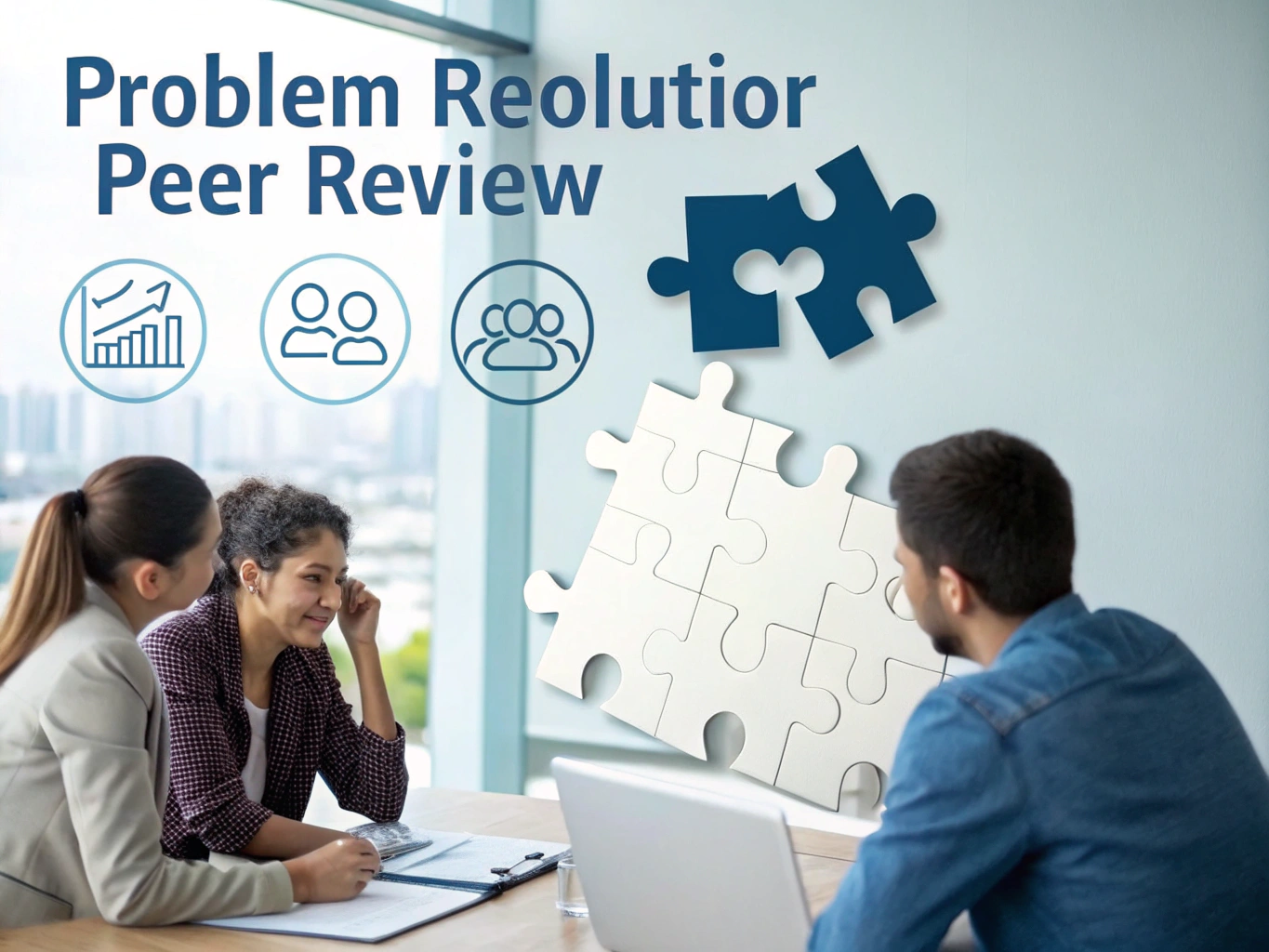Definition
The Problem Resolution Peer Review Policy is a structured framework designed to identify, address, and resolve conflicts and performance issues within the workplace. This policy encourages open communication and collaboration, while also providing a method for employees to evaluate each other’s work constructively, fostering a culture of continuous improvement and professional growth.
Key Components
Understanding the key elements of a Problem Resolution Peer Review Policy is essential for effective implementation. Below are the main aspects to consider:
- Problem Identification: It’s crucial that employees feel empowered to report issues as soon as they arise. Whether it’s a disagreement with a colleague or a concern about job performance, creating a culture where employees can speak up is the first step in resolving issues.
- Problem Resolution Process: This involves several stages:
- Initial Assessment: Determine the nature of the problem and its potential impact. For instance, if two team members are having a disagreement, assess how it affects their productivity and team dynamics.
- Investigation: Gather information through interviews or discussions to fully understand the situation. This might involve speaking with involved parties and reviewing relevant documents.
- Resolution Strategies: Depending on the conflict, techniques such as mediation or formal disciplinary action may be necessary. Engage a neutral third party to mediate if tensions are high.
- Follow-Up: After a resolution is reached, check in with the parties involved to ensure the solution is working and that no new issues have emerged.
- Peer Review Process: This component helps assess and enhance the performance of employees:
- Objectives: The goal is to provide feedback that supports professional growth. For example, if an employee excels at teamwork but struggles with deadlines, feedback can guide improvement in time management.
- Evaluation Criteria: Establish clear standards for assessing performance, considering factors like quality of work and adherence to company policies.
- Feedback and Recommendations: Constructive feedback should be specific and actionable, helping the individual understand both strengths and areas for improvement.
- Confidentiality: Protecting the privacy of individuals involved in the resolution process is vital. Ensure that discussions remain confidential unless it’s necessary to disclose information for compliance or safety reasons.
- Training and Awareness: Providing training on conflict resolution and effective communication equips employees with the skills they need to navigate workplace challenges more effectively.
- Compliance and Enforcement: Make it clear that non-compliance with the policy could lead to disciplinary measures, reinforcing the seriousness of adhering to the guidelines.
Importance in the Workplace
Implementing a Problem Resolution Peer Review Policy is essential for creating a positive work environment. Imagine a scenario where two team members have a misunderstanding that escalates into resentment. Without a clear policy in place, that conflict could disrupt team dynamics and productivity. Conversely, having a structured approach allows for issues to be addressed quickly and effectively, fostering a culture of trust and collaboration. Moreover, peer reviews can enhance teamwork by encouraging employees to give and receive feedback, ultimately leading to better performance and job satisfaction.
Best Practices
To make the most of your Problem Resolution Peer Review Policy, consider these actionable best practices:
- Encourage Open Dialogue: Foster an environment where employees feel safe discussing conflicts. Regular team meetings can provide a platform for open communication.
- Document Everything: Keep detailed records of conflicts, resolutions, and peer reviews. This can help track patterns and ensure accountability.
- Provide Continuous Training: Regular workshops on conflict resolution and feedback techniques can keep skills fresh and empower employees to handle situations independently.
- Solicit Feedback on the Policy: Engage employees in reviewing the policy itself. Their insights can highlight areas for improvement and demonstrate that their opinions are valued.
- Review and Revise Regularly: The workplace is always evolving, so periodically review the policy to ensure it meets current needs and incorporates best practices. This keeps the process relevant and effective.
Legal Considerations
It’s important to be aware of legal implications when implementing a Problem Resolution Peer Review Policy. Ensure that the policy complies with labor laws and anti-discrimination regulations. For instance, be cautious about how peer reviews are conducted to avoid any potential bias or discrimination. It’s advisable to consult legal counsel to review the policy and make necessary adjustments to minimize legal risks while fostering a fair workplace.
Conclusion
Understanding and implementing a Problem Resolution Peer Review Policy is crucial for nurturing a healthy workplace culture. By establishing clear guidelines for conflict resolution and feedback, you empower employees to take ownership of their work environment. This not only enhances individual performance but also contributes to the overall success of your organization. Remember, a proactive approach to problem resolution and peer feedback is key to fostering a thriving, engaged workforce.




